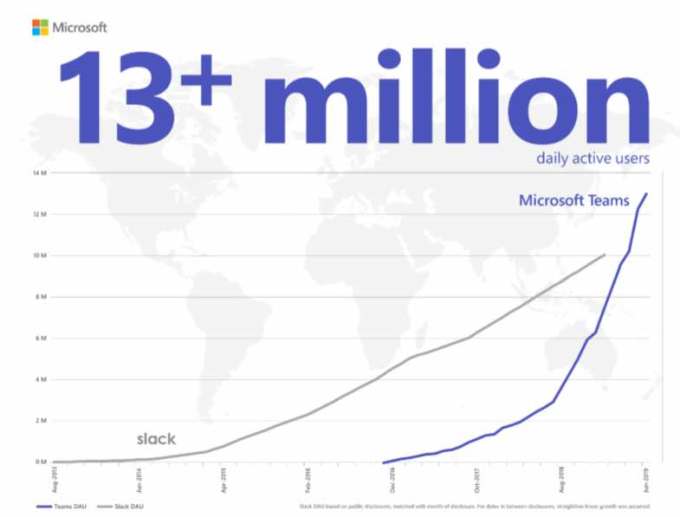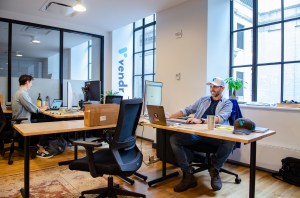As the market continues to turn against the wave of highly valued, venture-backed startups operating with little end in sight to their huge losses — Uber and WeWork being two prime examples — another startup is taking a proactive step to get ahead of the story, by cutting costs and restructuring before public opinion forces the issue on them.
Fair.com, a startup building a flexible car ownership business that is valued at $1.2 billion — backed by some $500 million in equity from Softbank and others, plus billions more dollars in debt funding — said today that it will be laying off 40% of its staff. On top of this, it is removing its CFO, Tyler Painter, the brother of the CEO and co-founder (and car business veteran) Scott Painter. He’s being replaced in the interim by Kirk Shryoc.
It’s not clear how many people 40% translates to in terms of headcount, nor which areas of the business will be affected. Fair’s CEO Painter is not disclosing the full number of employees that the company has across the US, or which parts of the business are going to be restructured. (As a marker though, there are some 539 employees listed on LinkedIn, which would work out at about 215 people.)
He did note that the business is not planning on shuttering any specific operations: leasing services for those driving for on-demand services, and its consumer-focused service will both remain operational, even as certain geographies and certain segments of the markets that Fair is serving are proving to be unprofitable.
This is one area where the CFO change will play.
“As Fair has grown, the skill sets needed to drive the business forward change. Kirk has a decade of experience running treasury and capital markets for large fleet companies, and is well known on the capital markets side,” the company said in a separate statement. “We’ve been working with him over the course of this year, and given our renewed focus on our acquisition and financing approach, now was the right time to ask him to step in to manage our upstream banking relationships and the fleet management.”
The full internal memo that Painter sent out to staff is below.
Painter (the CEO) said in an interview earlier today that the reason for the move was to proactively come out to make changes to help the company become more profitable at a time when the “capital markets” are focused on profitability — perhaps more than the over-focus on growth that has fuelled a lot of the biggest investments in recent years.
“It’s hard building a sustainable company and these are the choices you have to make,” he said of the news.
Fair has been growing at a fast clip in the last couple of years, at a rate of 5x, Painter said. In 2018, ahead of its funding from Softbank, the company picked up the unprofitable leasing business of Uber; and earlier this year it picked up Canvas, a car leasing business previously owned by Ford. In both cases, the terms of the deals were undisclosed.
At the time of the Canvas deal, Fair said it had about 45,000 subscribers currently in the U.S., with 3.2 million downloads across 30 markets, adding some 3,800 subscribers coming on from Canvas.
It’s notable that Fair is backed by the same investor that helped propel both WeWork and Uber to giant valuations ahead of the companies seeing their fortunes change, Uber’s in the public markets where it’s been pounded for its losses; and WeWork before it ever got to its IPO: the company had to withdraw its filing and just this week saw Softbank scoop up 80% of its business at a cut price in order to keep the whole thing from going under.
Cautionary tales for Fair, which is only profitable in certain parts of its business and is now turning its attention to fixing that.
Painter maintained that this was a proactive move, made not because Softbank or another investor leaned on it to do so. It’s notable that the last time the company raised equity funding was close to one year ago, so this could help put it in a healthier position were it considering to raise again.
“Softbank is a big shareholder and supporting my focus, and that is the reality right now,” Painter said. “Leaning on us is not the term,” he added in response to my multiple questions of whether Softbank pressured it to make these changes. “They are supporting us. There is a big difference.
“There’s no question that the world is changing and there is a lot of noise in system, but for us we are doing this proactively, on our terms. We recognise what we are seeing so we are being proactive to avoid this. We wouldn’t have the ability were it not for capital partners like Softbank. Despite all this noise they remain a steadfast believer in Fair.”
Last week’s big story was about how Airbnb, which has reportedly been planning to go public next year, has seen a widening loss. Today’s news could be a sign that we will see more of these rationalizations to come.
Memo here:
As we discussed at our last Fair Family Lunch, today’s companies must demonstrate a path to sustainable growth and profitability. Fair is no different. As one of the pioneers in automotive fintech, we now need to focus on being a profitable company. Our technology, our simple product design, and our focus on the customer are second to none. While we are proud of our growth, we are here for the long term. This means that we’ve decided to take proactive steps now to ensure we are a profitable public company later.
With the help and guidance of our leadership team, I’ve decided to focus the company’s resources on strengthening Fair’s core technology and reducing costs associated with the capital-intensive supply side of our business. Going forward, Fair will be a smaller team, focused on doing fewer things well. As part of the process of achieving profitability, we’re reducing our headcount across the business.
While these are the decisions that every entrepreneur dreads making, these are important for us to be able to safeguard the future of the business we’ve all worked so hard to build.
I remain grateful for this team’s hard work and optimistic for the future. We have created an entirely new category that consumers love. We’ve served tens of thousands of customers. We’ve powered Uber drivers’ livelihoods. We’ve helped everyone get access to the car they want, when they want, for how long they want — all on their phone and without taking on debt. We all did this together. We should all be proud of these achievements and I am personally grateful to all those who have given their time and expertise to deliver the future we set out to build.
Now, we will set out to transform the supply side of our business over the coming months, focus on building a profitable model, and operating with the rigor of a publicly traded company.
I expect everyone to have questions about what this means for them and the health of Fair, and while I can’t promise to have all the answers, I commit to keeping you informed along the way. These types of changes are painful, as I know from my previous experiences building companies. Our leadership team is responsible for the long-term sustainability of Fair, and no matter how difficult these decisions are, we believe they are the right steps in ensuring we have a bright future as a company. We thank you for being on this journey with us.
-Scott

Source: Tech Crunch
 The technology behind this new neural network is called “Bidirectional Encoder Representations from Transformers,” or BERT. Google first talked about BERT last year and open-sourced the code for its implementation and pre-trained models. Transformers are one of the more recent developments in machine learning. They work especially well for data where the sequence of elements is important, which obviously makes them a useful tool for working with natural language and, hence, search queries.
The technology behind this new neural network is called “Bidirectional Encoder Representations from Transformers,” or BERT. Google first talked about BERT last year and open-sourced the code for its implementation and pre-trained models. Transformers are one of the more recent developments in machine learning. They work especially well for data where the sequence of elements is important, which obviously makes them a useful tool for working with natural language and, hence, search queries.










